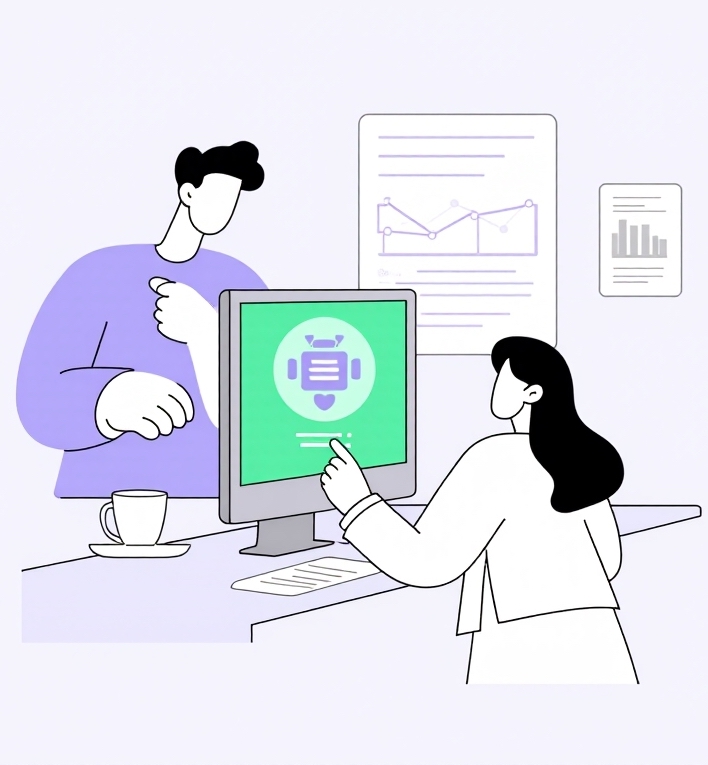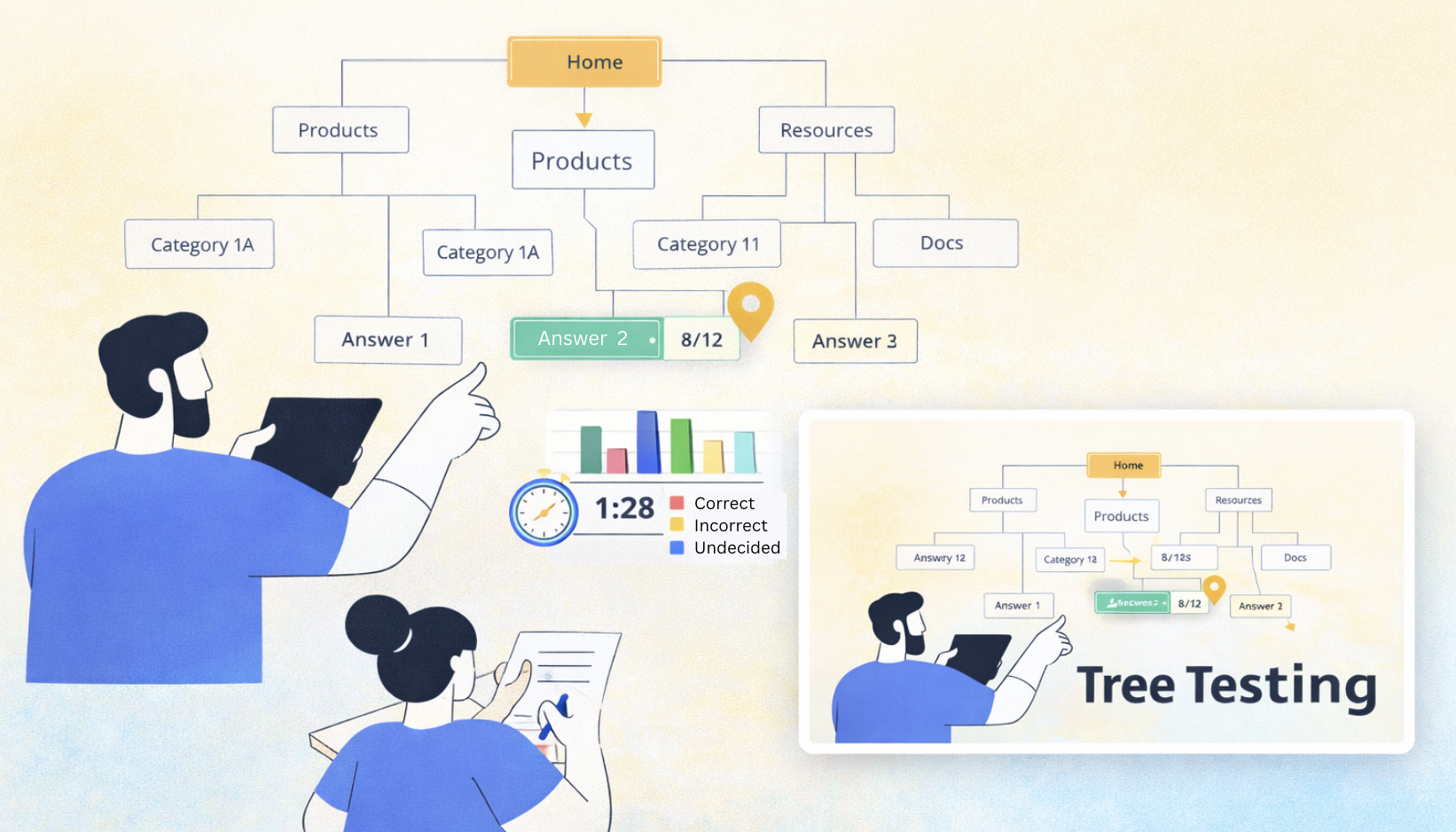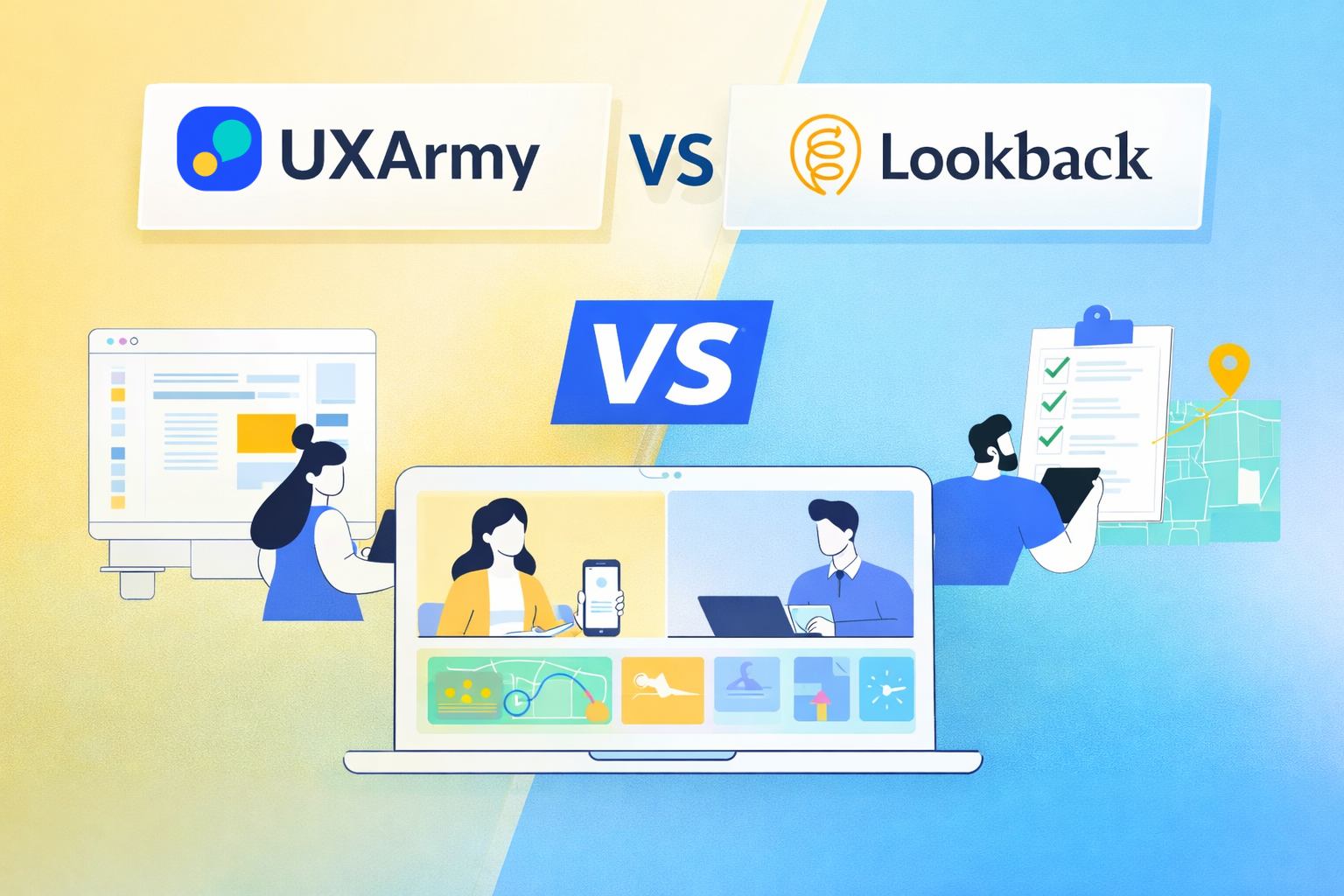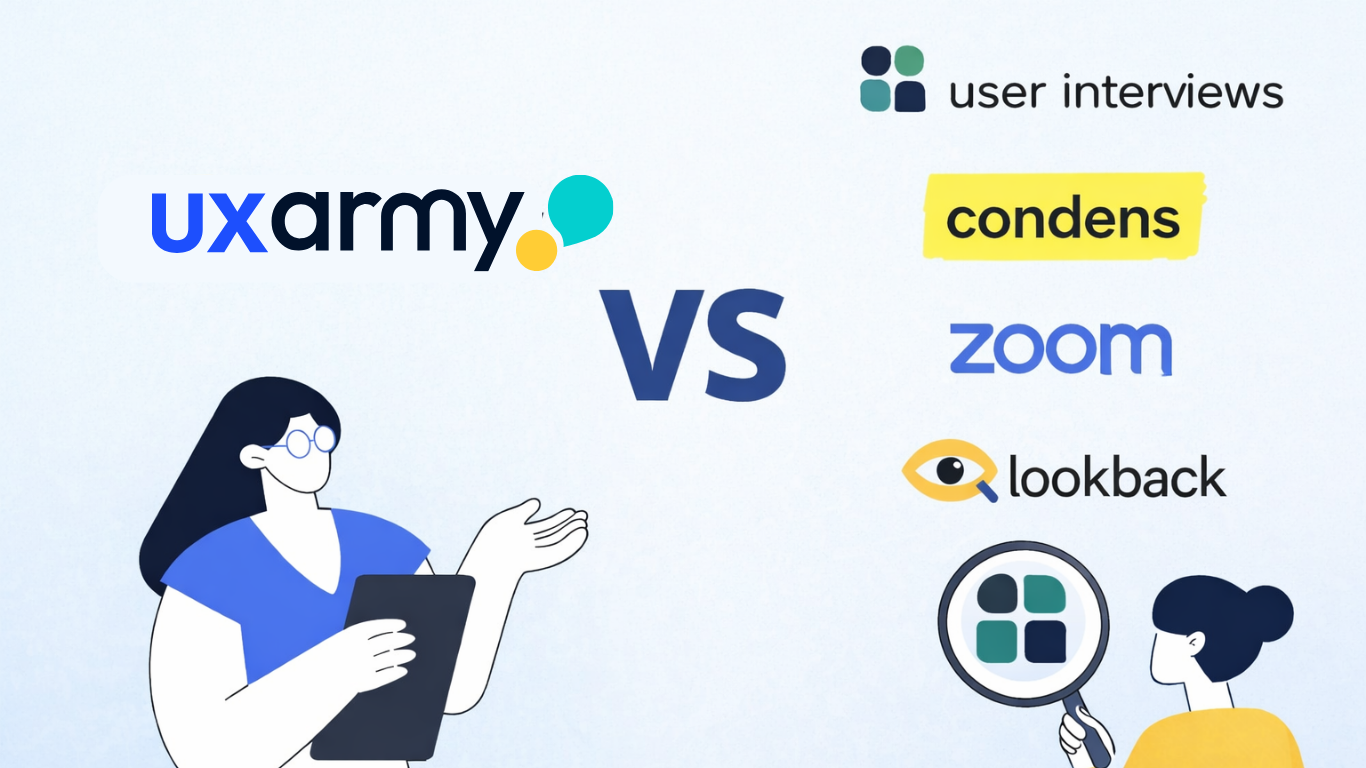Artificial intelligence is rapidly reshaping how user experience (UX) research is conducted. From automating routine tasks to surfacing hidden patterns in qualitative data, AI in UX Research is no longer just a buzzword. It’s a practical component of modern UX research platforms.
For teams evaluating UX research tools, understanding how AI in UX Research fits into real-world workflows is critical. This article explores how leading platforms incorporate AI, what tasks it handles best, and where human oversight remains essential.
Why AI in UX Research Matters
UX research has traditionally relied on manual processes. For instance, interviewing users, coding qualitative data, and compiling reports. But these methods can be time-consuming and difficult to scale.
AI transforms this process by automating key components of the research workflow:
- Cleaning of bad data from quantitative research results
- Transcribing and analyzing sessions in real-time
- Detecting behavioral patterns across sessions
- Surfacing actionable insights faster
For those searching for UX research platforms, AI capabilities are increasingly a decision-making factor, especially when speed, scale, and synthesis are priorities.
Practical AI Use Cases in UX Research
1. AI for Usability Test Analysis
AI in UX Research provides insights that were previously difficult to obtain, enhancing the overall research process.
Use Case: A product team conducts 12 unmoderated usability tests to evaluate a new mobile app flow. Each session is 20 minutes long, producing 4 hours of video.

Without AI: A researcher manually watches each recording, notes timestamps, tags critical issues, and creates a highlight reel. This takes nearly 8 to 10 hours of work.
With AI:
An AI engine automatically does the following:
- Transcribes audio into searchable text
- Flags moments of hesitation, repeated clicks, or rage clicks
- Suggests highlight clips for common user frustrations
- Clusters feedback based on topic or feature
Result: Within minutes, the team gets a summary report with 3 key usability issues, supporting video evidence, and suggested severity rankings, thus accelerating design iteration by days.
2. AI-Moderated User Interviews
Use Case: A UX team wants early feedback on 3 concepts but lacks time to schedule 1:1 interviews.
Without AI: Interviews are scheduled manually, conducted live, transcribed, then analyzed. Each interview takes 1 hour plus setup, transcription, and analysis time.
With AI:
- An AI chatbot interviews users asynchronously
- It adapts questions based on prior responses (e.g., “Can you elaborate on why that was confusing?”)
- Transcripts are auto-generated with sentiment highlights
- Insights are summarized into themes
Result: The team collects 15 interviews in two days without conducting a single live session. AI-generated highlights direct the team to scrap one concept and refine another, before burning more design hours.
3. AI-Driven Sentiment & Emotion Analysis
Use Case: A B2C app team runs a diary study to understand how users feel over a 10-day period using their new feature.
Without AI: Researchers manually read hundreds of diary entries, looking for emotional tone, frustration, delight, or concern. Tagging this sentiment consistently is subjective and time-consuming.
With AI:
- AI uses natural language processing (NLP) to analyze each journal entry
- Emotional tones like frustration, curiosity, or satisfaction are tagged automatically
- Heatmaps and graphs visualize how emotional sentiment evolved over time
- AI clusters insights by day, feature, and user segment
Result: Researchers quickly see that Day 4 marks a sharp frustration spike, tied to a setup barrier; data that informs a UX redesign before public launch.
4. AI for Participant Recruitment and Quality Screening
Use Case: A fintech product team needs high-quality participants with specific financial behaviors (e.g., uses budgeting apps weekly, aged between 25 to 40).
Without AI: Screening is done via long surveys, manual approvals, and follow-ups. It takes 5 to 10 days to recruit a balanced panel.
With AI:
- AI filters a participant pool in real time using behavioral data and past performance
- Flags “professional testers” or speed-clickers using scoring algorithms
- Matches participants based on profile completeness, device compatibility, and availability
- Predicts likelihood of task engagement or drop-off
Result: A tailored panel of 12 participants is ready within hours. Each Panelist meeting the criteria, with built-in quality guardrails to avoid noisy data.
5. AI-Assisted Survey and Task Design Optimization
Use Case: A UX team designs a 15-question unmoderated usability test but is unsure if the questions are too long, repetitive, or biased.
Without AI: Questions are tested internally or through pilot rounds; feedback is slow and subjective.
With AI:
- AI analyzes the language complexity and structure of each question
- Flags leading, double-barreled, or unclear questions
- Suggests rewording or breaking complex questions into multiple steps
- Predicts where users may drop off based on prior studies
Result: The revised study sees a 30% increase in completion rates and higher-quality open-text feedback. This helps the product team gather more reliable data without mid-study redesigns.
Benefits of Using AI in UX Research
- Speed: Faster analysis means insights are available while projects are still in-flight.
- Scale: Analyze hundreds of sessions without adding research headcount.
- Consistency: Standardized AI-driven coding avoids researcher bias in qualitative analysis.
- Cost efficiency: Especially in early-stage testing or large-scale survey analysis.
What AI Can’t (and Shouldn’t) Replace
AI in UX research is powerful. It is fallible. It’s best used as an assistant, not a replacement. It is getting smarter, a little more than an intern.
- Human empathy: AI can’t replace contextual understanding or emotional nuance in moderated interviews.
- Strategic synthesis: AI can surface patterns, but connecting those patterns to business goals still requires human interpretation.
- Ethical oversight: Researchers must ensure data collection and AI use comply with ethical guidelines.
Pro tip: Always review AI-suggested insights before presenting them to stakeholders.
How to Evaluate UX Research Platforms with AI
When evaluating tools, consider:
| Criteria | Why It Matters |
| Transparency | Can researchers verify how AI is generating results? |
| Human override | Are there tools for manual editing or flagging of AI errors? |
| Breadth of use cases | Does AI support both moderated and unmoderated testing? |
| Data security | How is user data protected when processed by AI? |
| Integration | Can AI insights be exported to tools like Dovetail or FigJam? |
Suggested Reading
Nielsen Norman Group: Why I’m Not Worried About My UX Job in the Era of AI
Experience the power of UXArmy
Join countless professionals in simplifying your user research process and delivering results that matter
Frequently asked questions
Can AI replace UX researchers?
Not entirely. AI is best viewed as an assistant that accelerates workflows. Strategic thinking, empathy, and interpretation remain human strengths.
Are AI insights accurate?
AI can surface patterns with high accuracy, but final validation should be done by human researchers, especially for qualitative nuance.
What types of research benefit most from AI?
Unmoderated usability testing, survey analysis, and participant management benefit most. Moderated interviews still need human involvement.
What’s the risk of relying too heavily on AI in research?
Bias, hallucinated insights, or decontextualized summaries. AI should augment and not replace the human judgment of UX researchers.
Does every UX research platform use AI now?
Most modern platforms offer some AI-driven features, but depth and transparency vary. It’s important to compare carefully before choosing.
How to use AI ethically in UX research?
To minimize the risk to your users, you should:
-Ask for consent at the start and end of a study, once users know what’s been discussed.
-Be transparent about AI’s role in your UX research process: what data is used, who it’s shared with, how it’s processed, and potential future uses.
How is AI used in UX research?
How is AI used in UX research? AI is a powerful tool in UX research. It helps automate tasks, analyze data, and uncover patterns, allowing researchers to focus on deeper insights and strategic decisions. However, it should be seen as a starting point rather than a replacement for human expertise.




